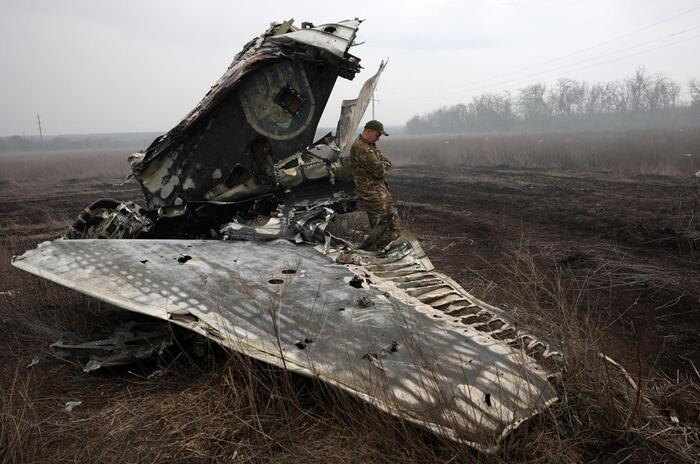Low water in Germany: These are the economic consequences
Created: 2022-08-12Updated: 2022-08-12, 4:35 p.m
The ever lower sinking water levels in Germany's rivers mean that shiploads are getting smaller and smaller - with consequences for the economy.
An overview.
Kaub – The further sinking low water of the rivers in the dry midsummer causes inland shipping to lurch.
In times when supply chains are already disrupted, this can have far-reaching consequences for the economy.
There is concern that some of the cargo ships will no longer be able to travel the Middle Rhine in a week or two.
After all, they can load less and less because of the risk of grounding, as the Federal Association of German Inland Shipping (BDB) reports.
The Kaub water level near the Loreley rock in the Unesco World Heritage Upper Middle Rhine Valley is decisive as the low bottleneck for all Rhine shipping.
Low water on the Rhine: What is the current situation here?
The level tower on the Middle Rhine near Kaub.
In Kaub, one of the most important reference gauges for Rhine shipping on the Middle Rhine is measured.
© Thomas Frey/dpa
"The ships are currently traveling along the entire Rhine with less than half of the usual cargo quantities, and on the Middle Rhine sometimes only about a third," reports the Federal Waterways and Shipping Administration (WSV).
The guide level Kaub shows only 42 centimeters on Friday morning.
Arbitrarily placed river gauges are only a relative and not an absolute water depth.
The depth of the fairway at Kaub is given by the WSV on Friday morning as 1.54 centimetres.
According to the BDB, freighters need a safety distance of 20 centimeters between the keel and the river bed.
For the coming days, the WSA expects the water level at Kaub to fall again by 10 to 15 centimeters and then probably again a slight, but not "significant" increase.
According to the Federal Institute for Hydrology, persistent low water will "also shape the discharge behavior in the coming weeks".
It has come unusually early this year.
In the drought year 2018, the water level near Kaub on one of the most important waterways in Europe only dropped to its record value of 25 centimeters on October 22nd.
So there is still plenty of time for a possible undercutting of this level before the autumn and winter precipitation.
When exactly is inland shipping no longer worthwhile?
That cannot be said in general terms.
In the event of high water, authorities can prohibit inland shipping.
"Otherwise, the waves can damage bridges, for example," explains BDB Managing Director Jens Schwanen.
At low tide, on the other hand, there are no bans, shipping companies decide for themselves how long it is still worthwhile transporting a greatly reduced load.
"We drive to the limit of physical impossibility," assures Schwanen.
also read
Pensioners, families and trainees: Now there's money from the state
Energy price flat rate: How pensioners get the 300 euros
Supply and demand: If a client pays enough, if necessary, only a few hundred tons would be transported with a 110-meter freighter, which can normally transport up to 3,000 tons.
In any case, freight customers have to pay a so-called small water surcharge when the water is low, depending on the water level and the contract.
The low water is increasingly affecting inland shipping nationwide.
© Thomas Frey/dpa
In his own words, the President of the Directorate-General for Waterways and Shipping, Hans-Heinrich Witte, expects in the
Frankfurter Allgemeine Sunday newspaper
that ships will continue to sail on the Rhine this year despite the persistent drought - with significantly less freight when the water level is low.
What is the demand for shipping space?
Gigantic.
Schwanen speaks of a tussle in times of the Ukraine war and the energy crisis: "Everyone is tugging at the same duvet." Around 2,000 barges are registered in Germany.
In addition to the already high demand from industry, agriculture and trade, for example, with supply chains already disrupted globally, there would be coal transport when coal-fired power plants are restarted and the transport of Ukrainian grain.
More than ten local cargo ships have now also been sold to Romania for the Lower Danube.
According to the BDB boss, trucks are hardly an alternative in Germany "because we transport so much larger quantities".
And even railway companies would have long since had too few wagons and train drivers when demand was high.
The Baden-Württemberg FDP traffic expert Christian Jung explains with regard to the low water: "The power plants on the Rhine and the oil refinery MiRO in Karlsruhe are literally sitting on dry land." Where possible, deliveries must be made by train.
"Due to the completely undersized rail infrastructure, this leads to significant delays or even train cancellations in long-distance and local traffic."
How can low water affect the economy?
Economist Stefan Kooths from the Kiel Institute for the World Economy explains: "Calculations on the consequences of the low water level in the Rhine in 2018 show that industrial production falls by around one percent if the water levels at the Kaub measuring point exceed the critical mark of 78 centimeters for a period of 30 days."
At its peak, industrial production fell by around 1.5 percent in 2018, explains Kooths.
Over the year, the low water cost about 0.4 percent of economic output. "However, the situation at that time cannot be transferred to today," explains the scientist.
The "height of fall" for German industrial production was much greater at the time.
How does the chemical industry, which depends on barges, react?
According to the industry association VCI, the industry has learned along the Rhine route from the extreme low water in 2018.
Transport concepts have been adjusted and inventories have been replenished, reports infrastructure expert Tilman Benzing.
Transports have already been shifted to road and rail - with problems.
"There is a lack of truck drivers, loading space is scarce and the transport of goods by rail is also very tense due to numerous construction sites," reports Benzing.
Like the BDB, the VCI has long been calling for the flat spots in the Middle and Lower Rhine to be removed more quickly.
One is concerned that this should now only be completed in 2033 instead of 2030.
According to the Rhineland-Palatinate Minister of Transport, Daniela Schmitt (FDP), 11.5 new jobs have been made available at the WSA this year to drive it forward.
And what does BASF do?
One of the world's largest chemical companies, headquartered in Ludwigshafen am Rhein, has been using flatter special ships since 2018.
One is under construction, another has been in operation since October 2021, says a spokeswoman.
The 110 meter long gas tanker is 12.5 meters wider than other gas tankers and can still transport 200 tons of liquefied gases at a water level of 30 centimeters in Kauber.
BDB Managing Director welcomes such initiatives very much, but also says with a view to the around 2000 registered freight ships nationwide: "One swallow does not make a summer."
(lma / dpa)













